Are you struggling to get your cat to sit still for nail clippings? You are not alone. Many cat owners face this challenge when trying to trim their cat’s nails. It can be a stressful experience for both the cat and the owner. However, keeping your cat’s nails trimmed is essential to prevent them from getting too long and causing discomfort or even injury.
The good news is that there are several techniques that you can use to help your cat sit still for nail clippings.
One of the most effective ways is to gradually get your cat used to having their paws touched and manipulated. An alternate way to approach the clipping process is using a towel to contain your cat. You may also use treats to encourage your cat to sit still or calming scents designed for cats.
Read on as we explore some of the most effective techniques for getting your cat to sit still for nail clippings. Whether you are a first-time cat owner or have been struggling with this task for a while, these tips will help make the process less stressful for you and your feline friend.
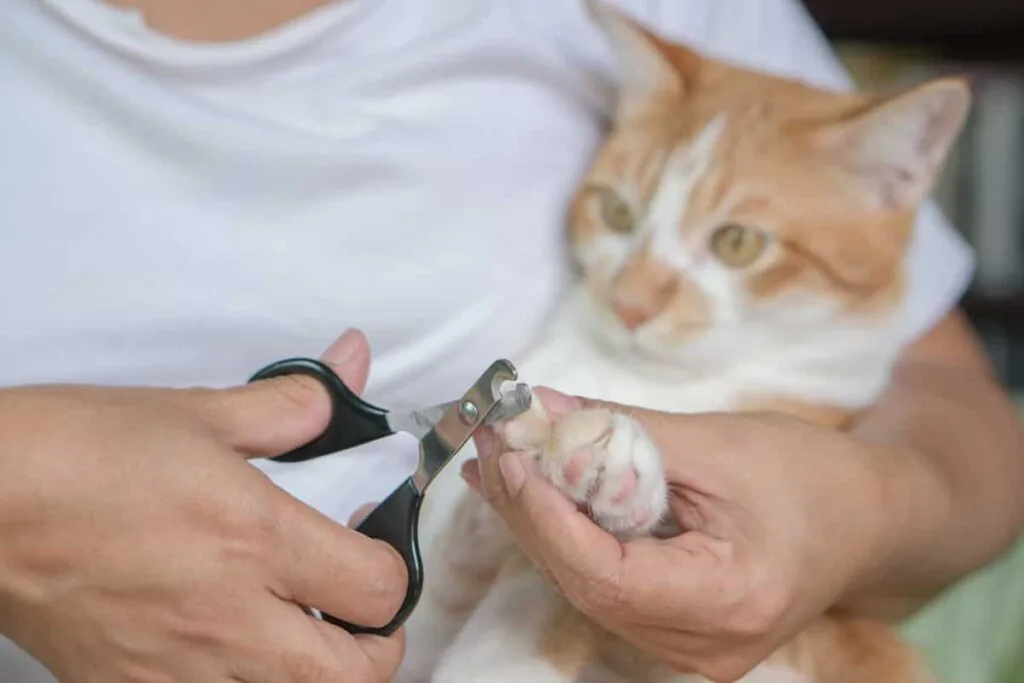
Preparing for Nail Clipping
Gathering Supplies
Before starting the nail clipping process, gathering all the necessary supplies is important. This will make the process smoother and less stressful for you and your cat. Some of the supplies you will need include:
- Professional-grade nail clippers specifically made for cats
- Delicious treats to reward your feline friend for exemplary behavior
- A towel especially crafted to wrap around your cat, calming and comforting it
- Styptic powder or cornstarch is a precaution in case you unintentionally cut them quickly.
Creating a Calm Environment
Cats can be sensitive to their surroundings and may become anxious if they sense stress or tension. To create a calm environment for your cat during the nail clipping process, consider the following:
- Choose a quiet room where your cat feels comfortable
- Dim the lights or use a soft light to create a relaxing atmosphere
- Play calming music or use a white noise machine to block out any outside noises
- Use pheromone sprays or diffusers to help your cat feel calm and relaxed
Ensuring you have the right items at your disposal and creating a tranquil atmosphere can go a long way in making your cat feel secure during nail clipping. This will help them remain settled, enabling you to easily clip their nails without issues.
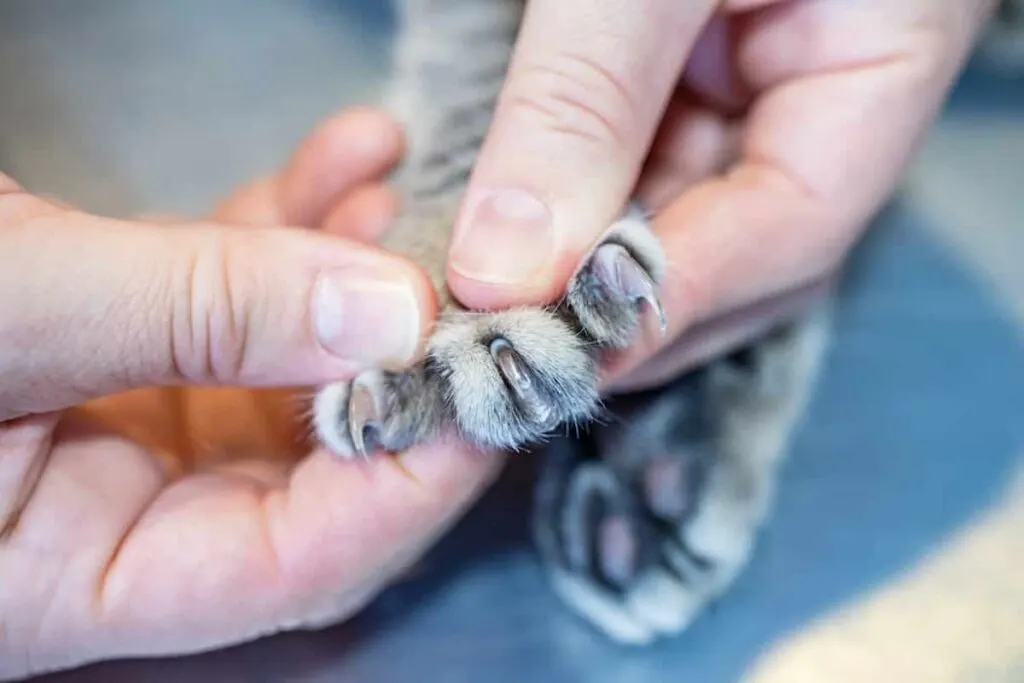
Training Your Cat To Deal With Nail Clippings
Sometimes it comes down to training when you need your cat to do something specific. Nail clippings are no different, and getting them used to the procedure through training is quite effective.
Positive Reinforcement
Positive reinforcement is a great way to train your cat to tolerate nail clippings. Begin by rewarding your cat with a treat or toy whenever they allow you to touch its paws.
As you gradually extend the time spent touching their paws, reward your cat each time they remain composed. This will help them form a positive connection between paw touches and rewards, which in turn will make it less intimidating for them when it comes to nail clippings later down the line.
Desensitization
Desensitization is an effective approach to training your cat to accept nail trimmings. Commence by allowing them to become accustomed to the sound of the nail clippers, even if you don’t clip their nails.
When they no longer react negatively at hearing it, progress onto touching their paws gently with the tool and gradually raising your intensity until clipping nails becomes a regular occurrence for both pet and owner.
Gradually increase the pressure you apply until your cat is comfortable with the sensation. This process may take several sessions, so be patient and take it slow.
Handling Techniques
To make nail clipping a smooth and stress-free process for you and your cat, ensure they are in the most comfortable position possible. Nestle them on your lap or on a table – whichever is more suitable – then lightly wrap them up with a towel, so only their head remains exposed.
This will help keep them calm and prevent them from scratching or biting. If your cat becomes agitated, take a break and try again later.
With the right amount of patience and consistency, nail trimming will become a breeze for both you and your cat.
Utilize positive reinforcement techniques coupled with desensitization to help create a stress-free environment during this training process. Correct handling methods should also be taken into consideration when teaching your feline friend how to tolerate their routine pawdicure sessions.
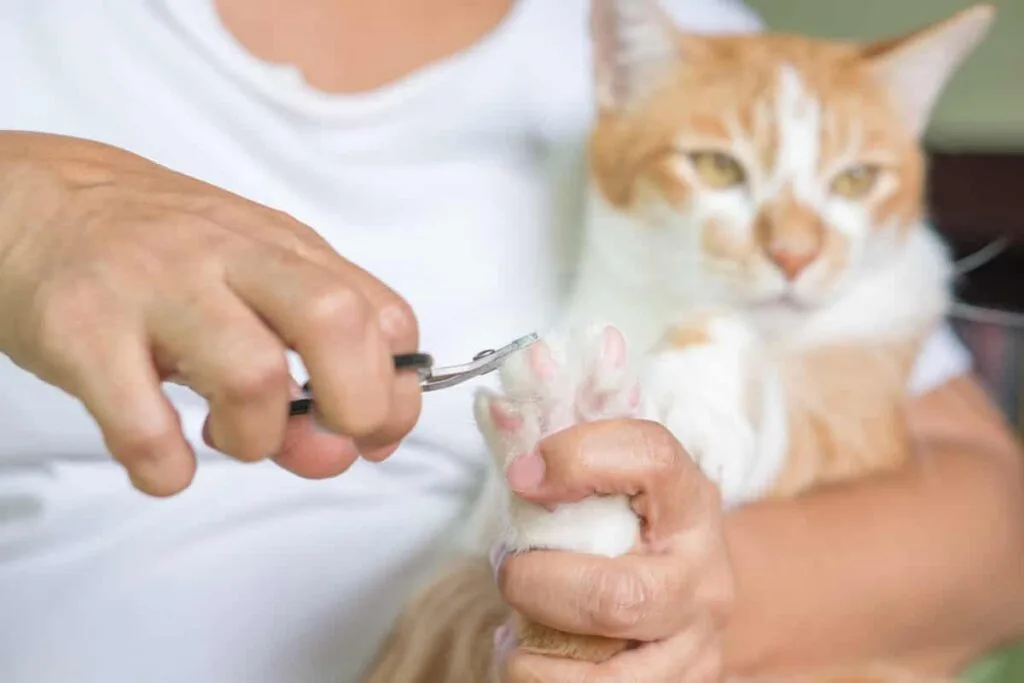
Executing the Nail Clipping
Now comes the technical part of the process, actually trimming the nail. You want to be careful how you do this because one wrong move can lead your cat to get aggressive and bite you.
Proper Holding Techniques
Before starting the nail clipping process, it is important to hold your cat in a way that makes them feel comfortable and secure.
To make trimming your feline’s nails a bit easier, you can snuggly swaddle them in a towel or blanket, exposing only the paw requiring attention.
Alternatively, if seated on the floor with legs crossed and your kitty placed on your lap, they are facing away from you – utilize your opposite hand to secure its paw and put mild pressure upon one of its toes to extend outwards.
Clipping Techniques
To keep your cat’s nail trimming safe and painless, it is essential to use the correct technique. A pair of professional cat nail clippers that are properly sharpened should be used; cut no more than 2 millimeters from the quick for optimal results.
Place the tip of the nail in the stationary ring of the trimmer with the clipper perpendicular to the nail. Squeeze the handle to move the cutting blade. The cutting blade should be closest to you, not the cat. Be sure not to cut it too short, as the nail will bleed.
If your cat is afraid of the sound the clipper makes, you can try using a piece of dry spaghetti in the clippers. Hold the clippers near their paws and gently massage one paw, then cut the noodle, so it makes a cracking noise. Immediately give your cat a reward for accepting the noise and the massage.
Remember to take breaks if your cat becomes agitated or stressed. It is better to take a break and return to finish the nail clipping later than to force your cat to endure the process and risk causing injury or trauma.
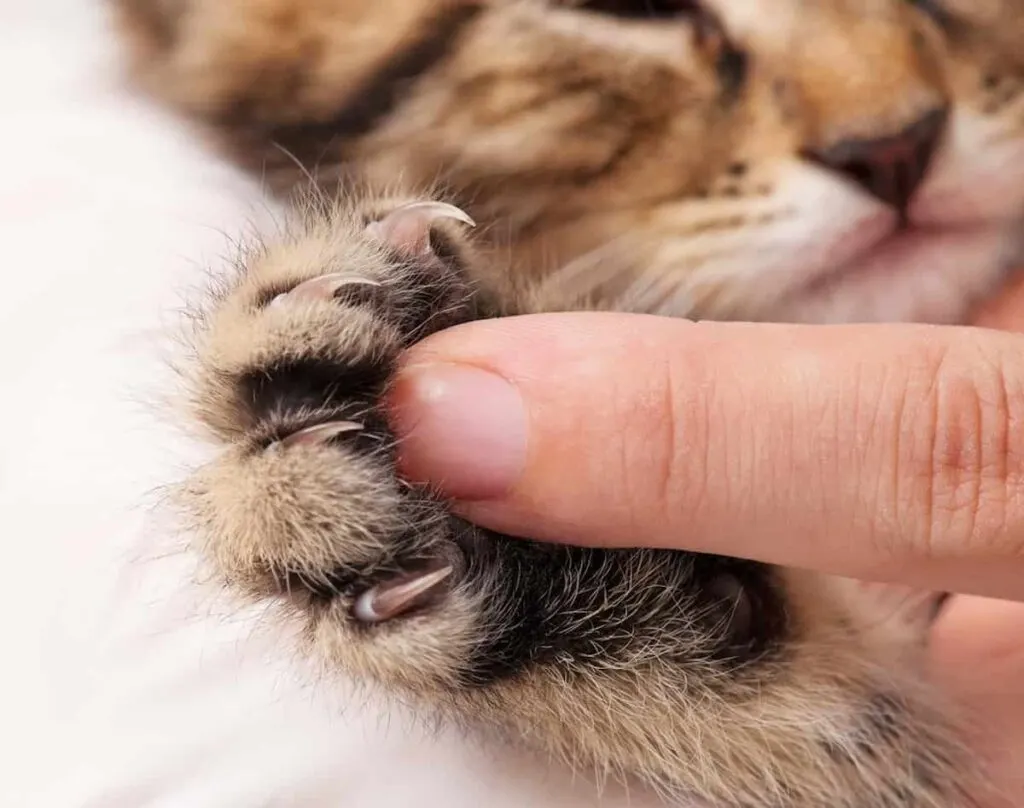
Dealing with Difficulties Around Trimming Your Cats Nails
Even with the best preparation, some cats may resist clipping their nails. Here are some tips for dealing with difficulties:
Handling Aggression
If your cat becomes aggressive during nail clipping, staying calm and avoiding getting hurt is important. Here are some steps to follow:
- Stop the clipping immediately and release your cat.
- Give your cat some space and time to calm down.
- Try again later, but only if your cat is relaxed and comfortable.
- If your cat continues to be aggressive, consider seeking professional help.
Seeking Professional Help
If you’re having trouble clipping your cat’s nails, don’t hesitate to seek professional help. Here are some options:
| Option | Description |
|---|---|
| Veterinarian | Your veterinarian can clip your cat’s nails or refer you to a professional groomer. |
| Professional Groomer | A professional groomer can clip your cat’s nails and offer additional grooming services. |
| Behaviorist | If your cat is showing signs of reluctance to nail clipping, a certified animal behaviorist can help you identify and resolve the underlying issues. |
Remember, it’s important to trim your cat’s nails to prevent painful ingrown nails and damage to your furniture. You can help your cat become more comfortable with nail clipping with patience and practice.
Alternatives To Getting Your Cat’s Nails Clipped
If your cat won’t stay still for nail clippings, there are several alternatives that you can try. While clipping their nails is vital to ensure the health and well-being of your feline friend, these methods might help manage their claws while avoiding any unnecessary stress or anxiety caused by regular trimming.
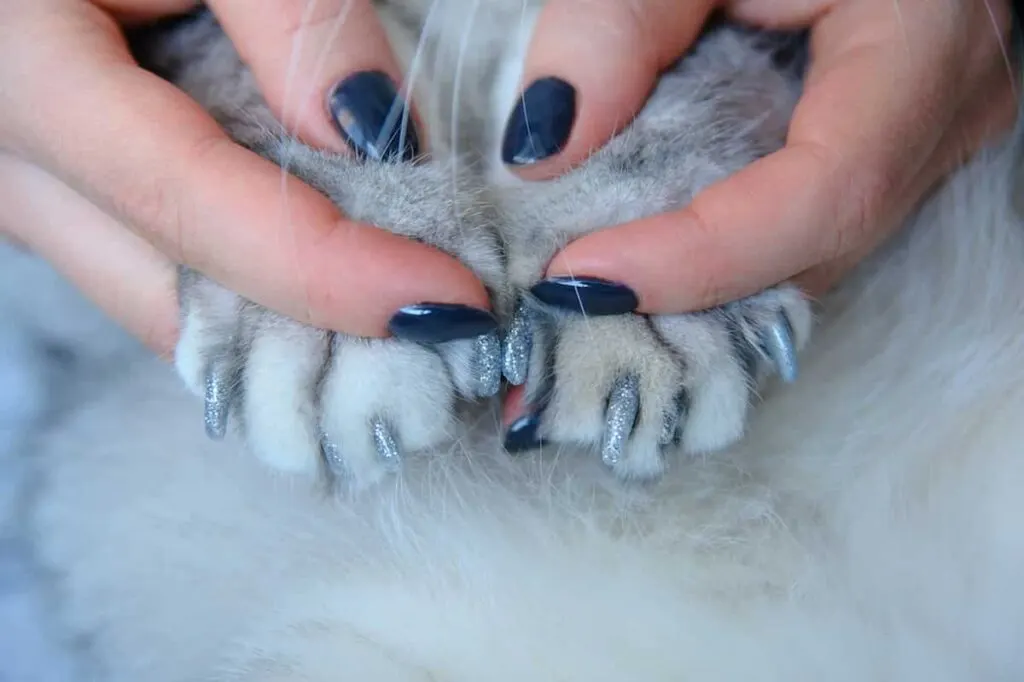
1. Soft Nail Caps: Sometimes, getting a cat to cooperate with nail clippings isn’t worth it. Enter soft nail caps!
Soft nail caps are the perfect solution for pet owners looking for an alternative to traditional nail clippings. These caps can be easily and safely adhered to your cat’s claws, making it impossible for them to scratch or damage any furniture or other items in your home.
Soft nail caps last several weeks and come in a variety of colors and sizes that fit perfectly around your feline friend’s nails. Best of all – they are completely pain-free!
2. Scratching Posts: Scratching posts can complement nail clippings for your feline companion! By giving them somewhere safe and secure to scratch and extend their claws, you provide mental stimulation and an opportunity for physical exercise that will help keep their claws strong.
When selecting the right scratching post, ensure it is solid and tall enough, so they have ample room to comfortably stretch out on.
3. Regular Playtime: Regular playtime with your cat can also help keep their claws under control. Playtime can help your cat burn off excess energy, which can reduce the need for them to scratch and claw at things around the house. You can play with your cat using toys, laser pointers, or even just a piece of string.
4. Professional Grooming: If your cat refuses to sit still for nail clippings, you may want to consider taking them to a professional groomer.
Expert groomers are competent and well-equipped to trim your cat’s nails without causing anxiety or distress. Plus, they can provide additional professional grooming services like bathing and brushing for a full pampering experience.
While regular nail clippings are important for your cat’s health and well-being, these alternatives can help keep your cat’s claws under control without the stress and anxiety that can come with traditional nail trimming. Try these alternatives to see what works best for you and your furry friend.

My name is James, and welcome to FAQCats!
Along with our team of cat owners, expert pet enthusiasts, and pet professionals, we aim to write engaging helpful, engaging content about cats. At FAQCats we strive to provide content that’s accurate and fun to read. Our team writes about everything related to cats; even the most complex of topics. Through extensive research and caring for our own fur-pals, we’re able to provide something cat owners worldwide will love. Have a look around, and leave us feedback anytime!

